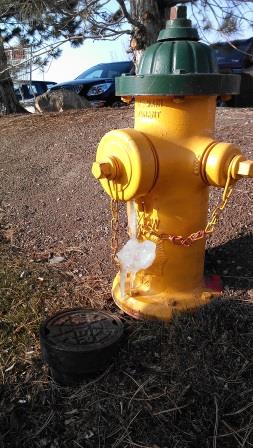f the weather has been cold you could end up with freeze damage. If water in the pipes and devices don’t get drained properly in time or protected from cold temperatures it can cause great damage. One example is your fire sprinkler system. National Fire Prevention Association (NFPA) standards require the pipe and valves on a fire sprinkler system to be protected from freezing temperatures by heating to a minimum of forty degrees or higher, be buried below freezing temperatures, have antifreeze installed or dry pipe system. If your fire system freezes hard enough the problems could be devastating is several ways, i.e;
- In the event of a fire the system may not work.
The water can expand when turned to ice and crack heads, pipes and valves.
 |
  |
- The volume of water is nothing less than amazing when you have an open pipe or head.
- If water ends up on a cold floor it can turn to ice very quickly.
- A single fire sprinkler head can flood an area in seconds.
- Bells, alarms and the fire department assuming a fire and finding an ice storm.
Remember, there are heavy pipes full of water above your head; you don’t want to take any unnecessary chances with fire and water safety.
1. In the event of water flooding you will need to find the water source. If it is coming from the fire system make sure there is no fire or that the fire has been extinguished completely.
2. Turn the valve off slowly. Turning the valve too fast may cause water hammer, a sudden stop of the water at high volume and pressure can cause severe damage.
3. Find out what caused the freezing of the system and correct it.
4. Fix the damage and clean up the mess. It is important to test the repair before restoration because the damage may be more extensive than thought and you will not know until full pressure is restored.
5. Time to restore and put things back together. Make sure to fix the original problem that allowed the pipes to freeze in the first place.
Shut off valves.
